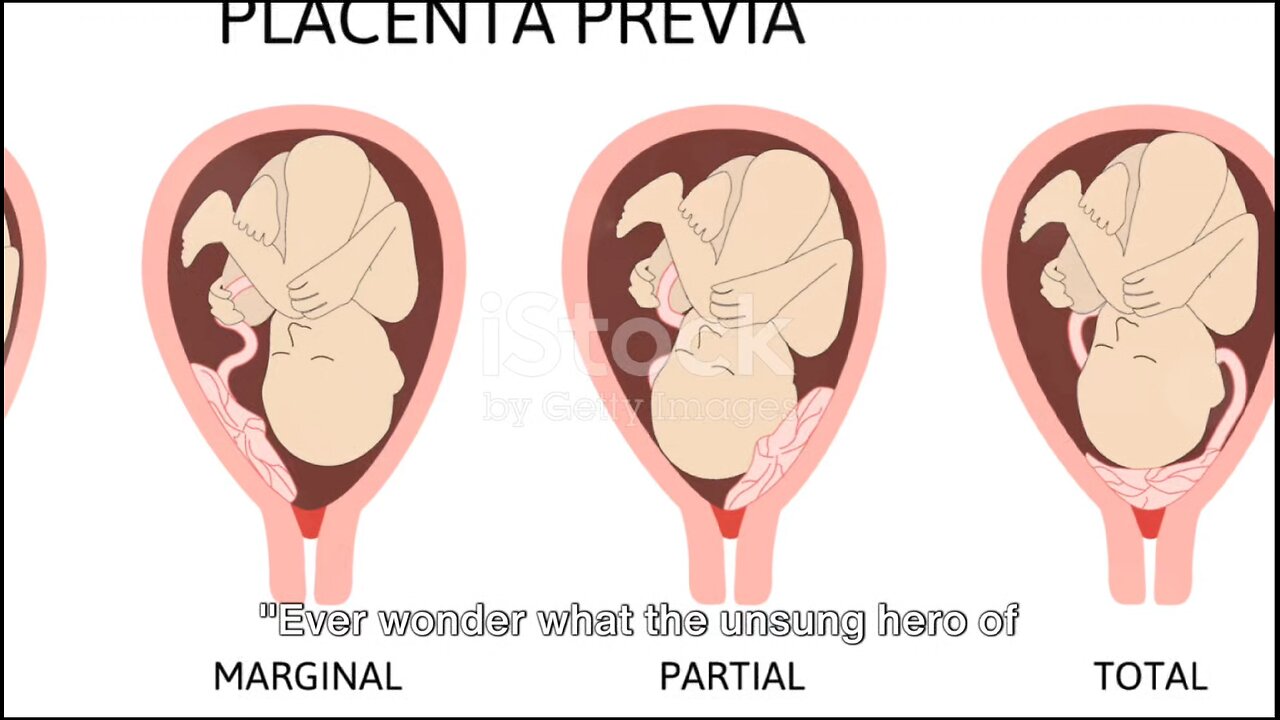Premium Only Content

The development of Placenta
The placenta is a vital organ in the development of mammals, playing a crucial role in supporting the growth and well-being of the developing fetus. Let's take a brief look at the stages of placental development:
1. **Formation during Pregnancy:**
- The development of the placenta begins shortly after fertilization when the fertilized egg (zygote) undergoes multiple cell divisions and forms a blastocyst.
- The blastocyst then implants itself into the uterine lining, and a structure called the trophoblast differentiates from it.
2. **Formation of Chorionic Villi:**
- The trophoblast develops into chorionic villi, finger-like projections that extend into the uterine wall. These villi play a crucial role in establishing a connection between the developing embryo and the mother's blood supply.
3. **Amniotic Sac and Yolk Sac:**
- Simultaneously, the amniotic sac and yolk sac form to provide protection and nourishment to the developing embryo.
4. **Placental Development:**
- The chorionic villi continue to grow and invade the uterine lining, forming the basis of the placenta.
- The placenta consists of maternal and fetal components. Maternal blood surrounds the chorionic villi, allowing the exchange of nutrients, oxygen, and waste products between the mother and the fetus.
5. **Structural Development:**
- As pregnancy progresses, the placenta undergoes structural changes, adapting to the increasing demands of the growing fetus.
- Blood vessels develop within the chorionic villi, forming a complex network that facilitates efficient nutrient and gas exchange.
6. **Endocrine Function:**
- The placenta also serves as an endocrine organ, producing hormones such as human chorionic gonadotropin (hCG), progesterone, and estrogen. These hormones play crucial roles in maintaining pregnancy and supporting fetal development.
7. **Maturation and Functionality:**
- By the end of the first trimester, the placenta is well-developed and fully functional. It continues to grow and adapt throughout pregnancy to meet the changing needs of the developing fetus.
8. **Delivery and Postpartum:**
- After childbirth, the placenta is expelled during the delivery of the baby. This process is known as the third stage of labor.
- The removal of the placenta marks the completion of its role in supporting fetal development.
In summary, the development of the placenta is a dynamic and intricate process that involves the formation of chorionic villi, establishment of maternal-fetal blood circulation, and adaptation to the changing needs of the developing fetus throughout pregnancy.
-
 LIVE
LIVE
vivafrei
3 hours agoKeir Starmer Goes Full Tyrant! Canada Goes Full Gestapo! Trump Picks & MORE! Viva Frei Live
3,397 watching -
 1:17:57
1:17:57
Russell Brand
1 hour agoLara Logan EXPOSES the Media's Hidden Agendas & Power Plays – SF499
27.7K38 -
 LIVE
LIVE
checkmate7_7
6 hours ago $0.26 earnedSlammin Apex clams | !GUILDED
420 watching -
 LIVE
LIVE
RonjnJeremy
3 hours ago $0.25 earnedClassic Wow 20th Anniversary edition HC PT 2 Seemless...Orc to troll...Still Shaman
394 watching -
 LIVE
LIVE
The Charlie Kirk Show
1 hour agoMatt Gaetz Speaks + Why Dems Lose the Bathroom Battle + Shut Down The Education Cartel | 11.22.24
13,097 watching -
 LIVE
LIVE
The Dilley Show
1 hour agoAmerica's Mayor, AG Pam Bondi and Q&A Friday! w/Author Brenden Dilley 11/22/2024
3,710 watching -
 LIVE
LIVE
Grant Stinchfield
1 hour agoRepublicans are a Greater Threat To Trump's Presidency than the Democrats
597 watching -
 1:00:50
1:00:50
The Dan Bongino Show
5 hours agoA Massive Shake Up On The Trump Transition (Ep. 2376) - 11/22/2024
581K1.24K -
 32:04
32:04
Stephen Gardner
17 hours ago🔥This Has GONE TOO FAR! Putin Begs Trump to intervene to avoid WW3!!
22.3K46 -
 1:01:56
1:01:56
Dr. Eric Berg
3 days agoThe Dr. Berg Show LIVE November 22, 2024
17.5K1